|
Sunday:
July 2, 2000 | |
0056 GMT |
 |
Space station bumps launch of ESA's Cluster 2 mission
The launch of the European Space Agency's first pair of Cluster 2 satellites has been pushed back three days to make way for the launch of the next major part of the International Space Station, an ESA spokesman said.
 FULL STORY FULL STORY
 |  |
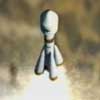
|
 |
SOHO, Cluster spacecraft star in new IMAX movie
Several of ESA's spacecraft play starring roles in a remarkable new widescreen IMAX movie entitled 'Solarmax'. The movie tells the story of humankind's struggle to understand the Sun, taking audiences on a voyage from pre-history to the leading edge of today's contemporary solar science.
 FULL STORY FULL STORY
 |  |
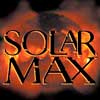
|
 |
|
Saturday:
July 1, 2000 | |
0757 GMT |
 |
Proton rocket launches Sirius 1 radio satellite
A revolutionary marriage between space and American motorists took a step closer to reality on Friday when a Russian Proton rocket successfully launched a digital radio broadcasting satellite.
 MISSION STATUS CENTER MISSION STATUS CENTER
 FULL STORY FULL STORY
 |  |
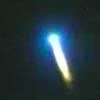
|
 |
Updated NASA tracking satellite launched into space
A Lockheed Martin Atlas 2A rocket soared into the Central Florida morning sky Friday on a $395 million mission to fortify NASA's communications relay link between Earth and space.
 FULL STORY FULL STORY
 MISSION STATUS CENTER MISSION STATUS CENTER
 ATLAS LAUNCH INDEX ATLAS LAUNCH INDEX
 |  |

|
 |
DAILY BRIEFING Other stories making news today
|
 |
Magnetic fields seen 'snapping' back to the sun -- A decades-old mystery about the behavior of magnetic fields in solar flares may now be solved, thanks to careful observations by a pair of solar scientists. They have sighted solar magnetic fields snapping back to the sun, like stretched rubber bands, during the release of solar flares.
|
 |
|
Friday:
June 30, 2000 | |
0545 GMT |
 |
Lockheed Martin Atlas rocket to launch today
The newest NASA tracking and communications relay satellite is slated for launch today at 1238 GMT (8:38 a.m. EDT) aboard a Lockheed Martin Atlas 2A rocket from Cape Canaveral.
 MISSION STATUS CENTER MISSION STATUS CENTER
 ATLAS LAUNCH INDEX ATLAS LAUNCH INDEX
 |  |

|
 |
Digital radio from satellites coming to a car near you
A revolutionary marriage between space and American motorists will take a step closer to reality later today when a Russian Proton rocket is to launch a digital radio broadcasting satellite.
 FULL STORY FULL STORY
 |  |
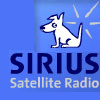
|
 |
NASA looks forward to next month's Zvezda launch
After a week of comprehensive reviews by program managers on both sides of the Atlantic Ocean, the next component of the International Space Station is poised for launch to provide the early living quarters for the first permanent occupants of the orbital outpost.
 FULL STORY FULL STORY
 |  |

|
 |
DAILY BRIEFING Other stories making news today
|
 |
ORBCOMM streamlines organization -- ORBCOMM, the first commercial provider of global low-Earth orbit satellite data communication services, announced Thursday that, to align its operational expenses with its revenue and funding sources, it has reduced its staff by 112 employees.
|
 |
|
Thursday:
June 29, 2000 | |
1520 GMT |
 |
Lockheed Martin to launch Atlas rocket on Friday
Senior managers this morning cleared an Atlas 2A rocket for launch on Friday after putting to rest concerns with its upper stage engines. The Lockheed Martin-built rocket will haul a NASA communications satellite into space.
 MISSION STATUS CENTER MISSION STATUS CENTER
 LAUNCH PROFILE MOVIE [QuickTime file] LAUNCH PROFILE MOVIE [QuickTime file]
 MAP OF LAUNCH DANGER ZONE MAP OF LAUNCH DANGER ZONE
 ATLAS LAUNCH INDEX ATLAS LAUNCH INDEX
 |  |
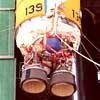
|
 |
Hubble uncovers details in gamma-ray burst galaxy
A group of European astronomers have obtained the first detailed images of a galaxy in which a gamma-ray burst has occurred. The image reveals a barred spiral galaxy with numerous star-forming regions.
 FULL STORY FULL STORY
 |  |

|
 |
Chandra observatory charts elements of exploded star
A new 14-hour observation by NASA's Chandra X-ray telescope of the supernova remnant Cassiopeia A has given the best map yet of heavy elements ejected in a supernova explosion.
 FULL STORY FULL STORY
 |  |

|
 |
DAILY BRIEFING Other stories making news today
|
 |
Raining deuterium gives new clues to Milky Way formation -- A team of researchers has discovered a significant amount of deuterium raining into the center of our Milky Way Galaxy. The deuterium they have detected in the Milky Way was created in the first few minutes after the Big Bang.

Boeing wins contract to launch Radarsat-2 in 2003 -- The Boeing Company will launch Canada's Radarsat-2 Earth-observation satellite, with the world's most advanced synthetic aperture radar (SAR) system, on board a Delta 2 rocket in 2003.
|
 |
|
Wednesday:
June 28, 2000 | |
1100 GMT |
 |
Cosmos-3M rocket launches with three satellites
A trio of satellites for Russia, China and the United Kingdom were successfully placed into Earth orbit today aboard a Cosmos-3M rocket. Liftoff occurred on schedule at 1037 GMT from the Plesetsk Cosmodrome in far northern Russia.
 FULL STORY FULL STORY
 |  |

|
 |
Mars could harbor much more water than thought
The crust of the planet Mars may hold two to three times more water than scientists had previously believed, a researcher says. The finding is based on the study of a meteorite.
 FULL STORY FULL STORY
 EARLIER MARS WATER STORY EARLIER MARS WATER STORY

|  |

|
 |
Are massive black holes related to nuclear bulges?
An impressive body of evidence says enormous black holes lurk at the center of many nearby galaxies, including our own Milky Way. Now astronomers are beginning to study the relationship between these gravitational beasts and the parent galaxies in which they are embedded.
 FULL STORY FULL STORY
 |  |

|
 |
Ikonos imaging satellite helps real estate developers
Space Imaging has announced the availability of one-meter resolution color satellite imagery for the real estate industry. This high-quality information has never before been available to the commercial marketplace.
 FULL STORY FULL STORY
 |  |
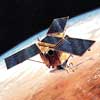
|
 |
|
Tuesday:
June 27, 2000 | |
0627 GMT |
 |
Engine test glitch delays Atlas rocket launch
The launch of a NASA tracking and communications relay satellite this week aboard a Lockheed Martin Atlas 2A rocket will be delayed one day to Friday so technicians can double check engines on the Centaur upper stage.
 MISSION STATUS CENTER MISSION STATUS CENTER
 ATLAS LAUNCH INDEX ATLAS LAUNCH INDEX
 |  |

|
 |
Cosmos-3M set to launch three satellites from Russia
A trio of satellites for Russia, China and the United Kingdom are awaiting a ride into Earth orbit on Wednesday by a Cosmos-3M rocket. Liftoff will occur from the Plesetsk Cosmodrome in far northern Russia.
 FULL STORY FULL STORY
 |  |
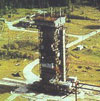
|
 |
Galileo studies ring-shaped plasma cloud around Jupiter
NASA's Galileo spacecraft continues its observation campaign of the Io torus this week. The data obtained will allow comparison of torus shape and energy output with similar results obtained during the past 4-1/2 years of Galileo's mission.
 FULL STORY FULL STORY
 |  |

|
 |
DAILY BRIEFING Other stories making news today
|
 |
Boeing consolidates Delta rocket production -- Officials at Boeing on Monday announced plans to consolidate the majority of Delta rocket production into the company's facilities in Pueblo, Colo., and Decatur, Ala., and moving some work from Huntington Beach, Calif.

New satellite kick engine successfully flown -- Atlantic Research Corporation's LEROS 1C Liquid Apogee Engine has successfully performed orbit-raising maneuvers for two A2100 satellites built by Lockheed Martin Space Systems Company, Sunnyvale Operations.
|
 |
|
Monday:
June 26, 2000 | |
1420 GMT |
 |
Much-anticipated launch of space station module set
Russian space managers meeting in Moscow today tentatively cleared the international space station's long-delayed Zvezda command module for launch July 12 atop a Proton rocket.
 FULL STORY FULL STORY
 |  |

|
 |
China lofts weather satellite
A Chinese Long March 3 rocket successfully launched a new weather satellite on Sunday, the Xinhua News Agency reported. The craft will be used to generate medium- and long-term weather forecasts.
 FULL STORY FULL STORY
 |  |
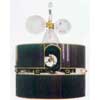
|
 |
Lockheed Martin Atlas to launch TDRS-H Thursday
NASA plans to launch the first spacecraft in a new generation of tracking and data relay satellites on Thursday morning aboard a Lockheed Martin Atlas 2A rocket from Cape Canaveral.
 MISSION STATUS CENTER MISSION STATUS CENTER
 |  |

|
 |
Pounds peel away with inflatable space structures
The latest Air Force Research Laboratory brainchild to reduce the bulk and weight of future space systems looks, well, kind of like a huge contact lens for a myopic Jolly Green Giant or a transparent flying saucer.
 FULL STORY FULL STORY
 |  |
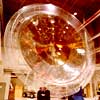
|
 |
 |

